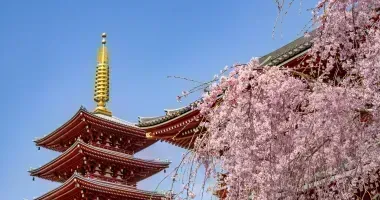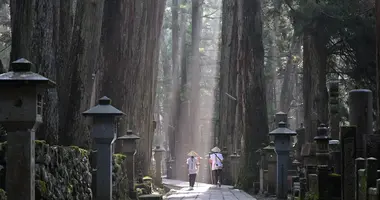Tokyo Facts: Discovering the World's Largest Metropolis

Tokyo, the vibrant capital of Japan, is a city that seamlessly blends ancient traditions with cutting-edge technology. As one of the world's largest and most populous metropolitan areas, Tokyo offers a fascinating mix of history, culture, and modernity. From its humble beginnings as a small fishing village called Edo to its current status as a global economic powerhouse, Tokyo has undergone remarkable transformations over the centuries. In this article, we'll explore some intriguing facts about Tokyo that showcase its unique character and significance on the world stage.
Historical Evolution: From Edo to Tokyo
The story of Tokyo begins with a small fishing village called Edo. In 1603, Tokugawa Ieyasu established the Tokugawa Shogunate in Edo, marking the beginning of the Edo period. This era saw the transformation of Edo into a major urban center, and by the mid-18th century, it had become one of the world's largest cities with over a million residents.
The pivotal moment in Tokyo's history came in 1868 with the Meiji Restoration. The imperial capital was moved from Kyoto to Edo, and the city was renamed Tokyo, meaning "Eastern Capital." This marked the beginning of Tokyo's role as the political and economic center of Japan.
Throughout the 20th century, Tokyo faced numerous challenges, including the Great Kanto Earthquake of 1923 and extensive damage during World War II. However, the city demonstrated remarkable resilience, rebuilding and expanding rapidly in the post-war period. This led to the Japanese economic miracle, propelling Tokyo to become a global financial hub.
In recent history, Tokyo has hosted the Summer Olympics twice - first in 1964 and again in 2021 (postponed from 2020 due to the COVID-19 pandemic). These events showcased Tokyo's ability to blend tradition with innovation on a global stage.
Geography and Climate: The Unique Landscape of Tokyo
Tokyo's geography is as diverse as its culture. The city is located in the Kantō region on the eastern coast of Honshu, Japan's largest island. It spans an area of approximately 2,194 square kilometers (847 square miles) and is part of the Greater Tokyo Area, which includes neighboring prefectures.
The city is divided into 23 special wards (ku), each operating as an individual city with its own mayor and council. Beyond these central wards, Tokyo Metropolis also includes 26 cities (shi), 5 towns (machi), and 8 villages (mura) in the western Tama area and the Izu and Ogasawara Islands to the south.
Tokyo's landscape is characterized by a mix of flat lowlands and hilly areas. The Musashino Plateau to the west and the Bōsō Hill Range to the east frame the Kanto Plain, on which much of Tokyo is built. The city is also home to several rivers, including the Sumida River, which flows through the eastern part of the city.
The climate in Tokyo is classified as humid subtropical, characterized by hot, humid summers and mild winters. The city experiences an average annual temperature of about 15.4°C (59.7°F). Summers can be quite warm, with August temperatures often exceeding 30°C (86°F), while winters are relatively mild, with January temperatures rarely dropping below 0°C (32°F).
Tokyo receives significant rainfall throughout the year, with an average annual precipitation of about 1,530 mm (60.2 inches). The city is also prone to typhoons, particularly during late summer and early autumn. Despite its location in a seismically active region, Tokyo has implemented rigorous earthquake-resistant building standards and disaster preparedness measures.
Population and Demographics: A City of Millions
As of 2024, Tokyo's population is estimated at over 14 million within the 23 special wards, making it the most populous metropolitan area in the world. When including the greater Tokyo metropolitan area, this number swells to an astounding 37 million people, accounting for about 30% of Japan's total population.
Tokyo's population density is one of the highest globally, with an average of about 6,158 people per square kilometer. However, this density varies significantly across different areas of the city, with some central wards being much more densely populated than outlying areas.
The city's demographic composition reflects Japan's aging population trend. As of 2024, about 23% of Tokyo's population is over 65 years old, while children under 15 make up approximately 11% of the population. The working-age population (15-64 years) constitutes about 66% of the total.
Tokyo is also home to a significant international community. As of 2024, there are over 647,000 registered foreign residents in Tokyo, with the largest groups coming from China, South Korea, Vietnam, and the Philippines. This cultural diversity adds to the city's cosmopolitan atmosphere and global outlook.
Economy and Finance: Tokyo's Global Influence
Tokyo is not only Japan's political capital but also its economic powerhouse. The city's economy is one of the largest in the world, with a gross domestic product (GDP) of approximately 113.7 trillion yen (US$1.04 trillion) in 2021. This accounts for nearly 20% of Japan's total economic output.
The Tokyo Stock Exchange (TSE) is the third-largest stock exchange in the world by market capitalization, trailing only the New York Stock Exchange and NASDAQ. It plays a crucial role in the global financial system and is home to many of Japan's largest corporations.
Key industries in Tokyo include information technology, electronics, publishing, and broadcasting. The city is also a major center for research and development, with numerous universities and corporate R&D centers. Tokyo's Akihabara district, known as "Electric Town," is famous for its concentration of electronics and tech-related businesses.
In recent years, Tokyo has been actively promoting itself as a global financial hub, implementing various initiatives to attract international businesses and talent. The city's efforts include the creation of special economic zones, tax incentives for foreign companies, and improvements in English-language services.
Transportation and Infrastructure: Navigating the Megacity
Tokyo's transportation system is renowned for its efficiency, punctuality, and extensive coverage. The city boasts one of the world's most complex and comprehensive public transit networks, which is crucial for managing the daily movement of millions of people.
At the heart of this system is the Tokyo Metro, which consists of 13 subway lines covering 304 kilometers (189 miles). Combined with the Toei Subway system, Tokyo's underground network is one of the most extensive in the world. The city is also served by an intricate network of suburban railway lines, including the iconic Yamanote Line, which forms a loop around central Tokyo.
Shinjuku Station, the world's busiest railway station, handles more than 3.6 million passengers daily. The city is also connected to other parts of Japan via the high-speed shinkansen (bullet train) network, which radiates out from Tokyo Station.
For air travel, Tokyo is served by two major airports: Haneda Airport, which handles mostly domestic flights and some international routes, and Narita International Airport, the city's main international gateway.
In terms of infrastructure, Tokyo boasts some impressive architectural feats. The Tokyo Sky Tree, standing at 634 meters (2,080 feet), is the tallest tower in the world and serves as a broadcasting tower and observation deck. The city is also home to numerous skyscrapers, advanced water management systems, and earthquake-resistant structures.

The Tokyo Sky Tree is Tokyo's and Japan's tallest structure at 634 meters
Culture and Attractions: Tokyo's Vibrant Scene
Tokyo's cultural landscape is a fascinating blend of ancient traditions and cutting-edge trends. The city is home to numerous historical sites and traditional gardens, juxtaposed with ultra-modern architecture and technology.
Some of the most popular cultural attractions include:
- The Imperial Palace, residence of the Emperor of Japan
- Sensō-ji, Tokyo's oldest Buddhist temple in Asakusa
- The Meiji Shrine, dedicated to Emperor Meiji and Empress Shoken
- The Tsukiji Outer Market, famous for its fresh seafood
- Akihabara, the center of otaku culture and electronics
- Shibuya Crossing, one of the busiest pedestrian crossings in the world
Tokyo is also a global fashion hub, with trendsetting districts like Harajuku and Ginza. The city's culinary scene is unparalleled, boasting the most Michelin-starred restaurants of any city in the world.
For art enthusiasts, Tokyo offers a plethora of museums and galleries, including the Tokyo National Museum and the Mori Art Museum. The city is also home to numerous theaters showcasing traditional performing arts like Kabuki and Noh, as well as modern productions.
Environmental Challenges and Initiatives: Tokyo's Sustainable Future
As a megacity, Tokyo faces significant environmental challenges, including air pollution, waste management, and energy consumption. However, the city has been proactive in addressing these issues and implementing sustainable practices.
Tokyo has set ambitious goals for reducing its carbon footprint. The Tokyo Metropolitan Government aims to reduce greenhouse gas emissions by 50% by 2030 (compared to 2000 levels) and achieve net-zero emissions by 2050. To achieve this, the city has implemented various initiatives, including:
- Promoting renewable energy use
- Improving energy efficiency in buildings
- Expanding green spaces and urban forests
- Encouraging the use of electric vehicles
- Implementing a cap-and-trade program for large businesses
The city is also working on improving its resilience to natural disasters, particularly earthquakes and typhoons. This includes upgrading infrastructure, improving early warning systems, and educating residents about disaster preparedness.
Tokyo's commitment to sustainability was showcased during the 2020 Olympic and Paralympic Games (held in 2021), which were billed as the most sustainable Games ever. Initiatives included using renewable energy, recycled materials, and promoting the use of public transportation.
As Tokyo continues to evolve, it remains a city of contrasts - honoring its rich history while embracing innovation and sustainability. From its humble beginnings as Edo to its current status as a global megacity, Tokyo continues to captivate and inspire people from around the world with its unique blend of tradition and modernity.









